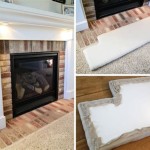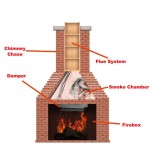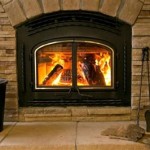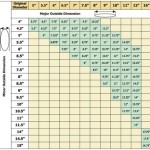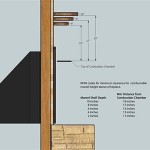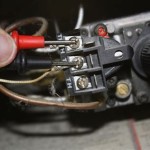Metal Fireplace Insert Paint: Reviving and Protecting Your Fireplace
Metal fireplace inserts, integral components of many homes, offer efficient heating and aesthetic appeal. Over time, however, the high temperatures and corrosive byproducts of burning fuel can degrade the insert's finish. The paint can chip, crack, or fade, detracting from the fireplace's overall appearance and potentially exposing the metal to rust. Applying specialized metal fireplace insert paint can effectively revitalize the insert, protect it from further deterioration, and extend its lifespan.
This article explores the various aspects of metal fireplace insert paint, including the types of paint suitable for high-temperature environments, the preparation process essential for achieving a durable finish, the application techniques that ensure optimal coverage and longevity, and the safety precautions necessary when working with these materials. Understanding these elements will empower homeowners to maintain their metal fireplace inserts effectively and preserve their functionality and beauty for years to come.
Understanding High-Temperature Paint for Fireplace Inserts
The primary characteristic that distinguishes metal fireplace insert paint from ordinary paint is its ability to withstand extremely high temperatures without blistering, peeling, or emitting harmful fumes. These paints are formulated with specific resins and pigments that maintain their integrity and color stability even when exposed to sustained heat. Several types of high-temperature paints are suitable for fireplace inserts, each with its own set of advantages and disadvantages.
One common type is aerosol high-temperature paint. These paints are convenient to apply, especially in hard-to-reach areas, and they offer a relatively quick drying time. However, they may not provide the same level of durability and resistance as other options. Furthermore, controlling the thickness and consistency of the paint layer can be challenging, potentially leading to uneven coverage.
Another option is liquid high-temperature paint, typically applied with a brush or sprayer. These paints offer superior durability and resistance to heat and abrasion compared to aerosol paints. They also allow for greater control over the application process, resulting in a more uniform and professional-looking finish. However, liquid paints require more preparation and cleanup, and they may take longer to dry and cure fully.
Within these broader categories, specific paint formulations cater to different aesthetic preferences and performance requirements. Some paints create a matte finish, while others offer a glossy or semi-gloss sheen. Some are specifically designed for rust prevention, while others focus on heat resistance. Selecting the right type of paint depends on the desired appearance, the severity of the heat exposure, and the condition of the existing surface.
It is crucial to always consult the manufacturer's instructions and safety data sheet (SDS) before using any high-temperature paint. These documents provide critical information about the paint's composition, application guidelines, drying times, and safety precautions. Adhering to these instructions is essential for achieving a successful and safe application.
Preparing the Metal Fireplace Insert for Painting
Proper preparation is paramount to achieving a durable and long-lasting finish. Neglecting this crucial step can result in premature peeling, cracking, or blistering of the paint. The preparation process involves several key steps, including cleaning, removing rust and loose paint, and priming the surface.
The first step is to thoroughly clean the metal surface to remove any dirt, grease, soot, or other contaminants. This can be accomplished using a wire brush, sandpaper, or a chemical degreaser. For stubborn deposits, a specialized fireplace cleaner may be necessary. It is crucial to ensure that the surface is completely clean and dry before proceeding to the next step.
Next, any rust or loose paint must be removed. Rust can be tackled using a wire brush, sandpaper, or a rust converter. Rust converters chemically transform the rust into a stable compound, preventing further corrosion. Loose paint can be removed with a scraper, wire brush, or sandpaper. Feathering the edges of the remaining paint ensures a smooth transition and prevents the new paint from chipping.
Once the surface is clean and free of rust and loose paint, priming is often recommended, especially for bare metal surfaces. A high-temperature primer provides a bonding layer between the metal and the topcoat, enhancing adhesion and preventing rust. Choose a primer specifically designed for high-temperature applications and compatible with the chosen topcoat.
Masking off areas that are not to be painted, such as glass doors or decorative trim, is crucial to protecting them from overspray. Use painter's tape and plastic sheeting to create a clean and precise line. Ensure the tape is firmly adhered to the surface to prevent paint from seeping underneath.
Finally, before applying the paint, lightly sand the primed surface with fine-grit sandpaper to create a slightly rough texture. This will further enhance adhesion and promote a smooth, even finish. Wipe the surface clean with a tack cloth to remove any sanding dust.
Application Techniques and Safety Precautions
The application technique significantly impacts the final appearance and durability of the paint finish. Whether using aerosol or liquid paint, following proper techniques ensures optimal coverage, prevents runs and drips, and promotes a long-lasting bond.
When using aerosol paint, hold the can approximately 10-12 inches away from the surface and apply thin, even coats. Avoid spraying too much paint in one area, as this can lead to runs and drips. Overlap each stroke slightly to ensure complete coverage. Allow each coat to dry completely before applying the next, following the manufacturer's recommended drying time.
For liquid paint, use a high-quality brush or sprayer designed for high-temperature applications. Apply thin, even coats, working in one direction. Avoid applying too much pressure, as this can create brushstrokes or uneven coverage. Allow each coat to dry completely before applying the next.
Regardless of the application method, maintain a consistent distance and angle to ensure uniform coverage. Avoid spraying or brushing in direct sunlight or in extremely humid conditions, as this can affect the drying time and the quality of the finish.
Safety precautions are paramount when working with high-temperature paints. These paints often contain solvents and other chemicals that can be harmful if inhaled or ingested. Always work in a well-ventilated area to avoid inhaling fumes. Wear a respirator or face mask to protect your lungs. Wear gloves to protect your skin from contact with the paint.
Avoid smoking, eating, or drinking while painting. Keep the paint away from open flames or heat sources. Dispose of used paint, rags, and brushes properly, following local regulations for hazardous waste disposal. Store unused paint in a cool, dry place, away from children and pets.
Proper curing is essential for the paint to achieve its maximum heat resistance and durability. Follow the manufacturer's instructions for curing the paint, which typically involves gradually increasing the temperature of the fireplace over a period of several hours. This allows the paint to fully harden and bond to the metal surface.
After the paint has fully cured, inspect the finish for any imperfections, such as runs, drips, or uneven coverage. If necessary, lightly sand the affected areas and apply another thin coat of paint. Regular cleaning and maintenance can help to prolong the life of the paint finish. Avoid using harsh chemicals or abrasive cleaners, as these can damage the paint. Gently wipe the surface with a damp cloth to remove any dirt or soot.

How To Spray Paint A Brass Fireplace Insert Erfly House

How To Spray Paint A Brass Fireplace Insert Erfly House

How To Paint Metal Fireplace Surround Four Generations One Roof

How To Spray Paint A Brass Fireplace Insert Erfly House

Fireplace Door Update With Spray Paint Roots Wings Furniture Llc

How To Update Brass Fireplace Insert With Spray Paint Iekel Road Home

How To Spray Paint A Brass Fireplace Bright Green Door

How To Paint A Metal Fireplace Hunker

How To Spray Paint A Brass Fireplace Bright Green Door

How To Paint Metal Fireplace Surround Mantel Designs Decor Design
Related Posts

